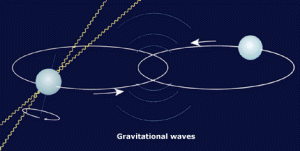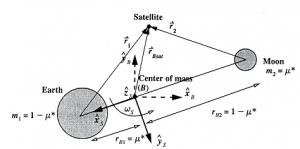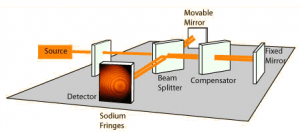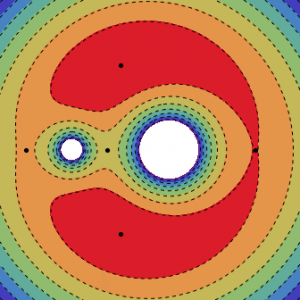One of the last predictions of general relativity to be directly verified is gravitational waves. We have indirect evidence that they exist, but new research finds they may be even more difficult to detect directly that we’ve thought.
In Einstein’s theory of general relativity, gravity is described as a curvature of space and time rather than a force. Because of this, when large masses move around each other they should create ripples in spacetime, the way wiggling your finger in a pool of water would create ripples on the water’s surface. These spacetime ripples are known as gravitational waves. While we’ve tried to observe these gravitational ripples directly, so far such experiments haven’t been successful.
But we have indirect evidence of gravitational waves through observations of millisecond pulsars. These are rapidly rotating neutron stars that have bursts of radio energy at a very regular rate. Because of their strong, consistent pulses, we can measure their motion with extreme precision. When we observe a millisecond pulsar orbiting another star (what is called a binary pulsar), we find that it’s orbit gradually decays. This is exactly what general relativity predicts. As gravitational waves radiate away from the binary system, they take with them some of the system’s energy, and as a result the two stars spiral closer to each other.
This indirect evidence of gravitational waves was first observed in the 1970s, and since then our measurements of millisecond pulsars have gotten much more precise. So precise that we should be able to observe another effect of gravitational waves through small fluctuations in their orbits.
There are lots of objects in the Universe that create gravitational waves, from binary pulsars, to supernovae, to merging black holes. So throughout the cosmos there should be small ripples of spacetime, like a pool with lots of ripples. These gravitational waves should cause binary pulsars to wobble slightly in their orbits, which we should be able to observe. In this recent work a team observed the orbits of binary pulsars for about 12 years, but found no evidence of any gravitational wobbling.
So what gives? Does this mean gravitational waves don’t exist? Not quite. We’ve observed lots of binary pulsars, and their orbits all match the predictions of relativity. But what this work does imply is that gravitational waves throughout the Universe might not be as strong as we’ve thought. If that’s the case, then directly observing gravitational waves may be an even bigger challenge than we’d hoped.
Update: As Jonah Miller has pointed out, weaker gravitational waves are only one possibility. There are actually several options, including:
- Gravitational waves are weaker than we thought.
- The waveforms are different than we thought and thus the stochastic background looks different.
- Supermassive black hole binaries merge either faster or slower than we thought, changing the frequency of the emitted waves.
- There are far fewer supermassive black hole binary mergers than we previously believed.
As usual, these kinds of mysteries are subtle, which makes them so challenging to solve.
Paper: R. M. Shannon, et al. Gravitational waves from binary supermassive black holes missing in pulsar observations. Science 25 September 2015: Vol. 349 no. 6255 pp. 1522-1525 (2015)













Comments
If gravitational waves aren’t as strong as we thought they were, is that because general relativity is wrong or because our picture of the kinds of objects that produce gravitational waves is wrong? (Or does it mean something else entirely?)
My guess: Newtons Inverse-square law should be a good enough estimation in this case.
I am not sure I understand correctly what a gravitational wave is exactly. My understanding is that after a perturbation, the space will return to a stable equilibrium in term of it’s geometry. But, what is the restoring force that cause space returning to its equilibrium ?
Example, for sound waves propagating in air, the restoring force is air pressure. It is not clear for me what happens to a flat space when it is disturbed.
Hi Boul, the space at a localized will return back to equilibrium, but the wave is propagating at the speed of light. The wave contains energy, so it must keep travelling in a straight line, assuming that it is in a vacuum. The mathematics of gravitational wave propagation is actually very similar to light. You can have plane wave solutions.
To jOh, Newton’s inverse square law is a correct approximation, yet his theory has no waves, as information travels instantaneously. Information takes time to travel in Einstein’s relativity, which could be encoded in a gravitational wave.
It is funny that this post was made after LIGO’s discovery, yet before the news was released to the public.